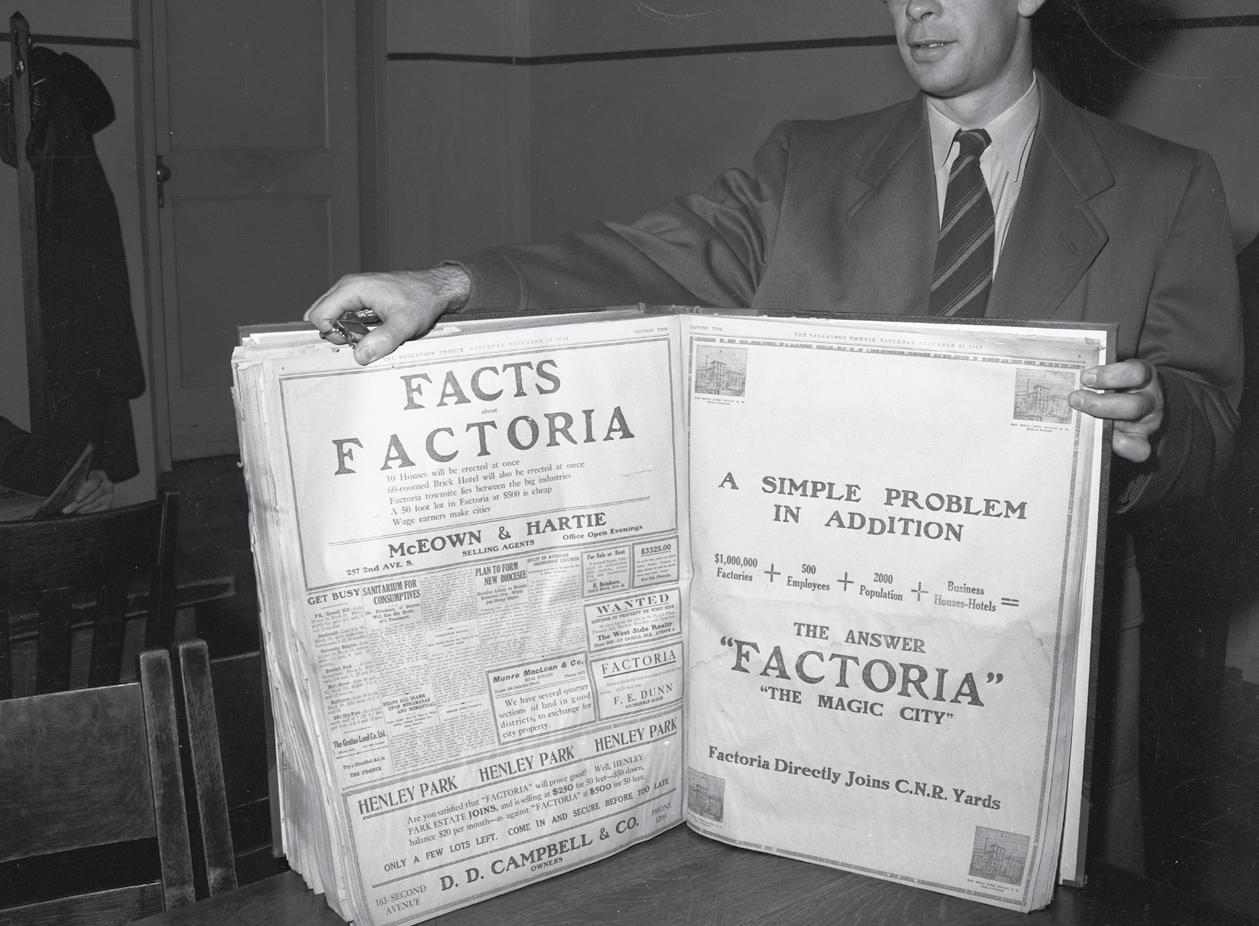
10 minute read
HOMEtown Reflections
Full page newspaper ads extol the virtues of Factoria in 1912 (photographed in 1952).
HOMEtown Reflections FACTORI A
Advertisement
Jeff O’Brien
“The Magic City” they called it: an industrial and residential development along the river that its promoters claimed would soon rival Saskatoon itself. Today, it’s the Silverwood Heights neighbourhood and you’d be hard pressed to find any evidence it ever existed. But once upon a time, this was the site of the greatest, most audacious dream ever perpetrated upon the good folks of Saskatoon. For this was Factoria.
Fortunes Bought and Sold
The year was 1912, and Saskatoon was riding a wave of euphoria never seen before or since. Money and people had been pouring in, transforming the city from “a few rude huts” as one writer sneeringly described
Photo Credit: City of Saskatoon Archives - Star Phoenix Collection - S-SP-B-669-004
it, to the very model of a modern, major metropolis. This is the era of Saskatoon’s great real estate boom, when speculators big and small were making fortunes buying and selling land in and around the city, and when every rumoured development drew swarms of investors, eager to capitalize on the opportunity. “Buy now!” the newspapers screamed, and buy they did, with land values climbing daily to new and dizzying heights. But the key to the future was industry. They were talking about 50,000 people here by 1915 and double that by 1920. For that we needed was factories, and lots of them.
The Glass Ceiling
In November of 1912, a stranger came to town. His name was Robert E. Glass.
He was from Chicago, he said, the front man for a big, eastern syndicate, and he’d been scouring the west for a place to build a brewery, the biggest, finest brewery you could imagine: six-storeys high, costing half a million dollars and capable of pumping out 100,000 barrels of beer annually. But for great beer you need great water and the very best water in the west, he told us, was right here at a place called Silver Springs.
Silver Springs was the farm of a horse trader named Billy Silverwood and it was named for the springs of pure water that seeped out of the riverbank there. In those days, Saskatoon suffered regular outbreaks of typhoid fever from contaminated water.
“People were dying like flies from bad water,” Silverwood said in an interview in 1948, explaining how he’d
Factoria featured on a plan of "Greater Saskatoon" drawn by City Commissioner Chris Yorath in 1913.


Photo Credit: City of Saskatoon Archives - Acc. 2016-001
Northern Brick Tile and Supply Co. plant with sand pit, 1913.
Factoria flour mill, by then owned by Robin Hood Flour, 1929.
Saska Manufacturing Co. buildings, 1913.
Photo Credit: Local History Room - Saskatoon Public Library - PH 87-112

Photo Credit: Local History Room - Saskatoon Public Library - PH 2012-68


conceived the idea of bottling the water from the springs on his farm and selling it to hotels, restaurants and offices. At its height, he was shipping 120,000 gallons of spring water a year out of the bottling works on the riverbank just below Adilman Drive. But in 1912, the city installed a water filtration plant and the incidence of typhoid fever plummeted, as did the market for bottled water.
This made Glass’ arrival timely. He had originally wanted to buy only the springs and the bottling works. But Silverwood owned much of what constitutes modern-day Silverwood Heights, and he insisted that it be part of the deal. As luck would have it, Glass announced, it turned out to be blessed with inexhaustible deposits of high-quality clay, limestone and sand, ideal for making brick, tile and glass.
And so, Factoria was born.
Touting the Deal
It’s a simple idea. Take some land and subdivide it, making sure to include plenty of residential lots. Talk to the railway about building a spur line to link the industrial sites and get a few businesses to make noises about locating out there. If they actually do, great. Then, just as soon as you can, start running giant ads in the newspaper extolling the virtues of your new development. Run little ones, too, the ones that masquerade as legitimate news copy, all talking about the industries that will locate out there and the progress being made, and especially (pay attention; this is the important part) all the workers and their families who would soon be moving out there.
Plan of Factoria showing factory sites, 1913.
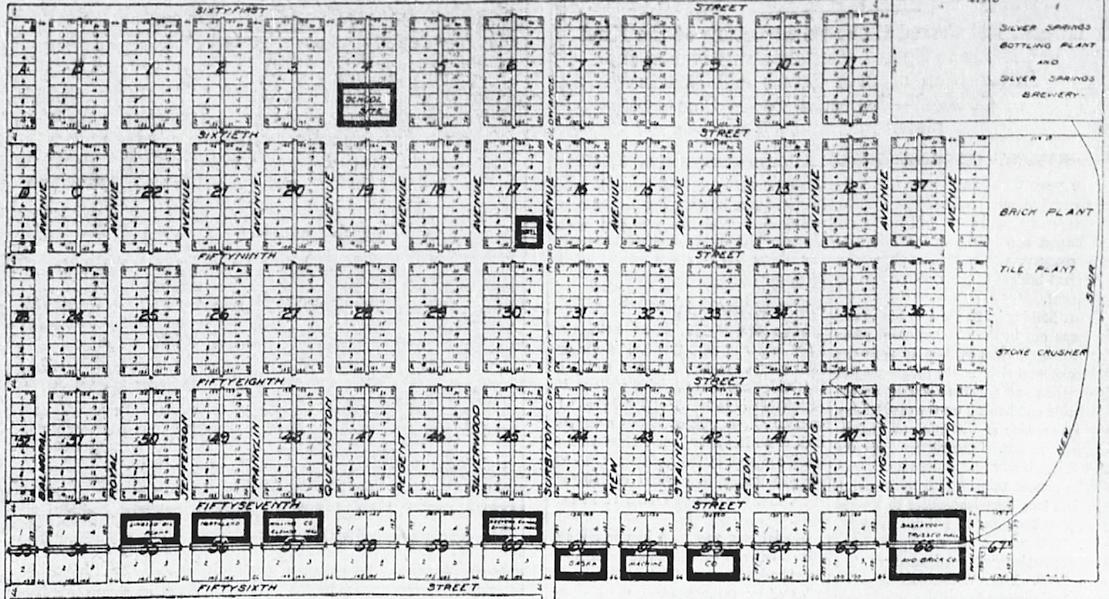
There were around 1,750 residential lots in Factoria, priced initially at $500 each, worth a total of $875,000, or about $19 million in today’s money. Even with a fifty-foot frontage, $500 was a lot of money in 1913 to pay for a patch of bald prairie nearly two miles out of town. But the speculators lined up, and lots in Factoria sold like bug spray at a nudist camp. In one week alone in December 1912, they sold 200 of them. By the end of January, lots there were being advertised for more than three times their original price.
Show Us the Proof
Not everyone was a fan. The Saskatoon Daily Star printed strident editorials demanding Glass provide proof his promises weren’t just empty words. The Board of Trade Commissioner agreed. “No one really knows who he is or what his record is,” he wrote, “and his answers are illuminating only to himself.” But while Glass may have been closemouthed, his actions seemed to speak for themselves. In December, when the rumblings against him were loudest, he quickly produced an architect’s sketch of the proposed Silver Springs Brewery, a handsome building of brick and steel, ninety feet tall with the most modern of machinery imported all the way from Germany. He also hired a local architect to design a three-storey hotel and ten small houses, construction of which began early in January, the same time the Silver Springs Brewing Company was incorporated.
This silenced the critics, and by spring, things were starting to happen. An agreement was reached for construction of the all-important railway spur, and work had begun in earnest on a flour mill, two brick plants and a lumberyard. A meeting
Photo Credit: Saskatoon Star Phoenix Dec. 4, 1913.

Harvesting wheat in 1950 on the Silverwood Farm, where the Wastewater Treatment Plant is today.
of the newly established Factoria Board of Trade at the newly completed hotel attracted a hundred people and there were plans to incorporate Factoria as a village.
A Slight Change of Plans
Then, on June 2, 1913, the newspaper reported that control of the proposed brewery was now in local hands and that the option to purchase, which Glass had taken on Billy Silverwood’s land back in November, had lapsed. Silverwood announced that he was resuming ownership of it and that Glass was “out of it.”
The dream of Factoria began to fade soon after. By 1913, Saskatoon’s boom was sliding inexorably into bust, taking Factoria with it. The beginning of the First World War in August of 1914 simply put the last nails in a coffin that was already tightly shut.
In the years since, nearly every trace of Factoria has disappeared. The flour mill didn’t actually open until 1918, running intermittently until 1930, then again in 1939 before being torn down a year later. Saska (later Jackson) Machines, a farm implement factory, liquidated in 1923 and the buildings were destroyed by fire in 1933. Both it and the flour mill were on the railway spur running through what is now W.J.L. Harvey Park. Saskatoon Trussed Wall, in the middle of Whiteswan Drive behind Ball Crescent, and Northern Brick and Tile, located near the river on the grounds of today’s Wastewater Treatment Plant, were both closed by 1916. It’s not clear if the hotel and restaurant ever opened, but if they did, it was briefly, and the hotel, which stood where the east leg of Benesh Crescent turns north toward Adilman Drive, was demolished in 1921. You could still find some of the old factory foundations as late as the 1970s, when work began on Silverwood Heights and they were finally obliterated.
Few Remnants Remain
Billy Silverwood’s farmhouse, at the foot of Adilman, stood well into the 1960s. But his huge, concrete-floored barn was destroyed when a lightning strike started a fire in 1951, and by 1969, the house and buildings were gone. All that’s left now are the barn floor, almost completely overgrown, and his concrete back steps, weathered and overgrown, standing like an ancient sentinel where the house once was.
Even as recently as twenty years ago, you could easily find the remains of the bottling plant and other bits and pieces among the trees and poking up out of the long
Ruined foundation of the Silverwood farmhouse in 1977. The Factoria Hotel, 1913.
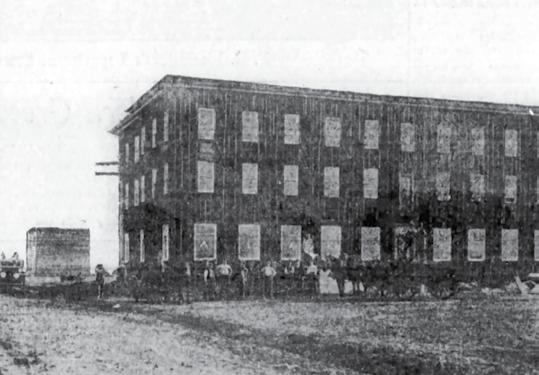
Photo Credit: Saskatoon Phoenix
Silverwood farm, including barn and Silver Spring Bottling Works plant (far right), 1913.

Photo Credit: Local History Room - Saskatoon Public Library - PH 2018-194-1
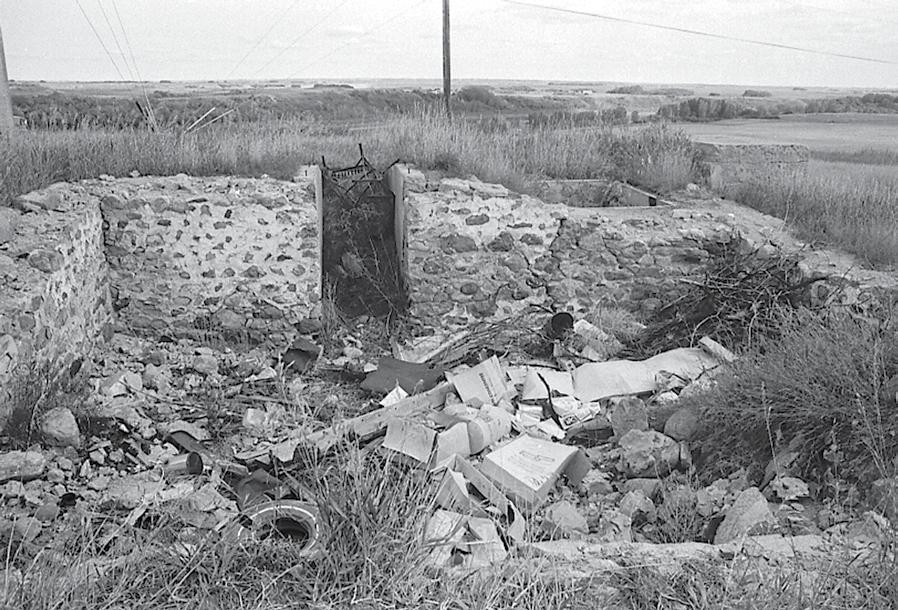
All that remains today is Silverwood's back steps at the end of Adilman Drive.
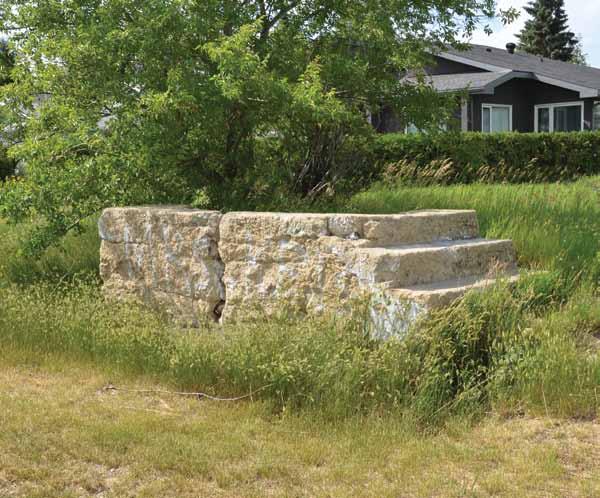
grass below the house. But the area became increasingly overgrown. On a recent walk, we found wonderful trails winding through the thick forest and tiny streams trickling down from the springs that still seep out of the riverbank. But of the rest, we could find no trace.
Indeed, Factoria today would be unrecognizable to any of those who dreamed and schemed and counted the money they hoped to make from it all those years ago. But perhaps they would have approved anyway. After all, thousands of people call Factoria—Silverwood Heights—home, and wasn’t that the point? It took longer than expected, and it didn’t turn out quite as planned. But the important thing is that they dreamed, and in the end, the dreams came true.
Jeff O'Brien
On th e trai
Photo Credit: Jeff O'Brien
l of Rober t E. g lass
The story of Factoria has been told many times over the years. But the fate of Robert E. Glass, the so-called “Chicago promoter” who masterminded it, has always been a mystery. He departs suddenly and without warning in June of 1913, as much a stranger to Saskatoon as he had been when he arrived the previous November. Was he really who he said he was? Where did he come from? Where did he go? A small but very self-satisfied article in the Daily Star in January 1914 gave us our first clue, taking us eventually from Missouri to Illinois, from South Dakota to the Pacific Northwest and eventually to South America. Along the way we learned a lot about Robert E. Glass, promoter, land speculator and financial opportunist. Whether he was mining gold in South Dakota or Idaho, building theatres in Reno or selling stock in Nicaraguan banana plantations, chicanery, bluster and a relaxed attitude toward accuracy in land descriptions were his hallmarks, and he left behind him a string of investors and employees who were poorer afterward than they had been previously. Glass was indicted at least twice for his role in shady land deals, including a development just outside of Spokane, Washington, called Jovita Heights. It was his court date and subsequent conviction for this that called him away so suddenly in June of 1913. (There was also an earlier Factoria—this one outside of Seattle in 1910. We couldn’t find evidence that Glass was specifically involved, but he was there at the time and it was a veritable twin of our Factoria.) In 1915, after exhausting his last appeal, he was sentenced to sixty days jail and a hefty fine over the Jovita Heights affair. After that, he spent several years travelling back and forth between his home in Tulsa, Oklahoma, and his interests in Nicaragua, before disappearing for good sometime after 1922.







